#3d printing pens
Link
Discover the hottest Amazon deals of the moment! From home essentials to tech gadgets, I've rounded up 20 exclusive offers that will have you saving big. Unleash the power of discount codes on everything from washable area rugs to 3D printing pens. Don't miss out on these limited-time promotions – grab your savings now before they disappear! Explore my handpicked selection for budget-friendly shopping that blends quality with affordability. Your next great find awaits!
#amazon deals#amazon codes#amazon#home decor#3d printing pens#tech gadgets#electronics#home decoartion#home improvement#tools#painting
0 notes
Text
#3d doodler pen#3d drawing pen#3d pen 3d pen#3d pen amazon#3d pen filament#3d pen printer#3d pens for kids#3d printing pens#ideas for 3d pen#pen drawing 3d
1 note
·
View note
Text
3D Printing Pens(Quick Guide)
WHAT IS A 3D PEN?
A 3D pen is a small tool that allows children to doodle and sketch in 3D. It resembles a pen and extrudes plastic through a nozzle at the tip after passing it through a heated system to melt it. Because the plastic hardens almost instantly, it can be used to create simple or intricate forms and models. PLA, ABS, Nylon, Wood, and even flexible materials are all acceptable.
A 3D pen is a fantastic tool for creating any type of drawing that comes to mind in 3D. Anyone can use this 3D pen without understanding how it works. The heating element and nozzle are interchangeable with those used in desktop 3D printers.
The printer head is guided manually rather than being managed by computer software and motors, but in the 3D pen, we must draw or sketch the diagram manually, as we would with a regular pen. Some electrical and electronic components are used; let us go over what they are.

COMPONENTS OF THE 3D PEN
Hot End
DC Geared Motor
Motherboard
Arduino Controller Board
Transistor (NPN)
LED Display

Uses of a 3D Pen
Three-dimensional objects are created with 3D printing pens by extruding melted plastic filament.
They can be used for many things, including art, design, and prototyping.
Some people use them for repairs and modifications as well.
The possibilities are endless; with a 3D pen, you can create anything you can imagine!
The best 3D pens allow you to ‘draw’ in three dimensions using heated plastic filament, and we adore them. They can be used to make impressive 3D art, models, and toys, or they can be used to decorate your favourite things.
For that, we got the best 3D pen for kids, the best 3D pen for adults, and the best 3D pen for beginners.
Best 3D pen for kids
This Ganesha P65 3D pen is an excellent gift for children who enjoy doodling and drawing. This 3D pen is an excellent way to introduce children to the world of 3D printing. Its distinguishing feature is that it works with both ABS and PLA filament. FDM technology can now be used in a wide range of applications, from drafting and prototyping to spatial learning and three-dimensional sculpting. The 3D Pen will take your design projects to new heights, whether you’re an engineer or an artist. It appeals to children because it is shaped like Ganesha.
Best 3D pen for adults
This 3D printing pen for professionals comes with filament, adapter, and manual and is made of non-toxic materials. It is ideal for kids, architects, artists, and anyone interested in 3D printing with a 3D pen. The 3D printing pen’s ease of use and flexibility will push your imagination to the limit. The 3D pen will open up a world of possibilities and imagination. It has easy access to filament control. You can also adjust the speed to enhance your doodling experience.
Best 3D pen for beginners
This magical 3D pen is specifically designed for children and beginners who enjoy drawing and want to see their work come to life. It is extremely simple to use and is made of child-safe materials. This magical 3D Pen features a sleek design, touch screen buttons, and a colourful filament to get kids started with 3D printing.
1 note
·
View note
Text
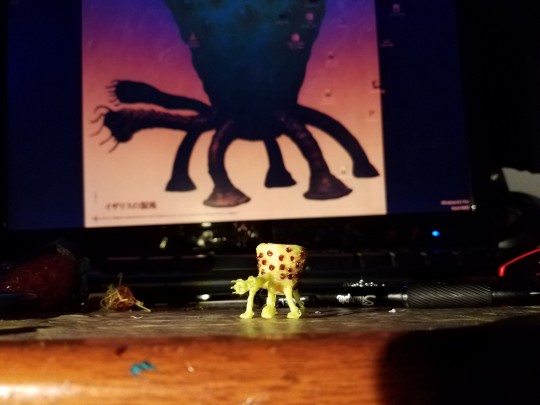
67 notes
·
View notes
Text

What if we kissed (and we were both red hood)
#figured out it's way too small if i connect both sides just as is#so ill have to cover a huuuge chunk in the fron with the 3d pen if i ever want to wear it#fml#jason todd#red hood#batman#batfam#3d printing
38 notes
·
View notes
Text

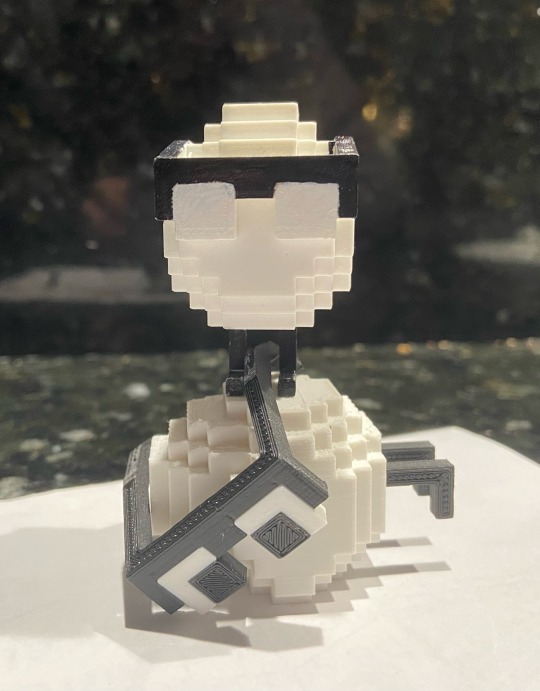
#qsmp#qsmp eggs#not gonna tag each individual egg#i’m bored home alone with a 3d printer#i know some are missing but they’re. a little more complex than i’m willing to bother with rn#look i have a limited number of colors and some random paint pens that don’t work perfectly with 3d print plastic
25 notes
·
View notes
Text
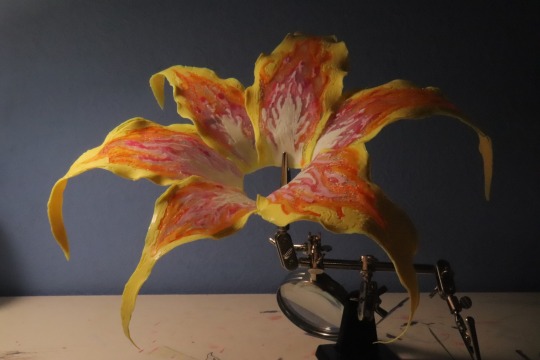

I don’t do ads for free so I won’t mention which 3D pen but this flower sculpture is coming along so nicely for my first try.
I should have another update on this project tomorrow when i finish the purple petals and stems on the inside.
#art#artists on tumblr#artwork#artistsupport#kels arts#flowers#flower sculpture#sculpture#floral#tangled#tangle tower#tangled fanart#tangled art#tangled flower#3d art#3d#3d printing#3d pen#3d pen sculpture#3d model#pla filament#filament flower
4 notes
·
View notes
Text
Primordial Jade Winged Spear Rechargeable Pen / Xiao’s signature weapon

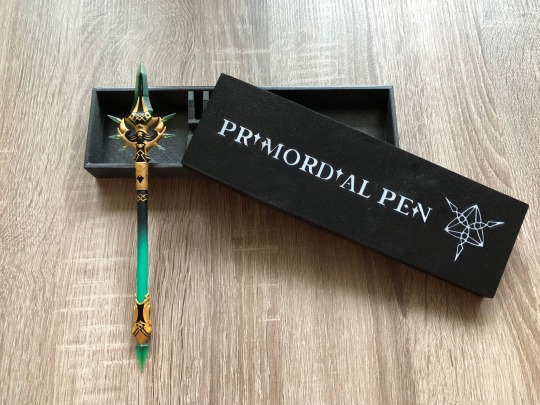

We are very happy to announce our new product! Personally I started playing Genshin because of Xiao’s design, that’s why we decided to convert his signature weapon into a functional pen.
This pen is refillable, compatible with BIC crystal refills.
It was modelled in Blender, 3D printed in UV resin and handpainted.
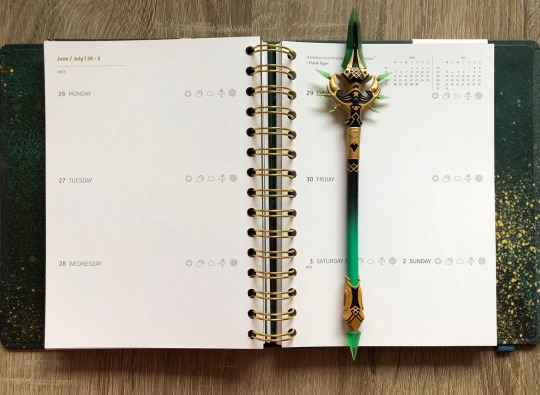
#hologramo#etsyartist#3d printing#etsy#gift#Xiao#genshin#genshin impact#genshin impact liyue#zhongli#weapon#fanart#genshin fanart#3d printed#blender#resin#primordial Jade#primordial pen#adeptus xiao#etsyshop#etsygifts#gifts#genshin anemo#anemo bois#anemo supremacy#原神
10 notes
·
View notes
Text
I got a present today and it was my own 3d printing pen. I did a few ones to practice but I also wanted to do something else. This is the first batarang I ever made while using this pen!
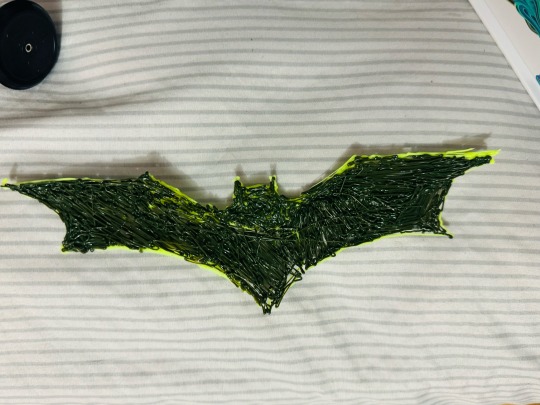
I am going to paint it so hopefully there’ll be another post.
.
.
.
2 notes
·
View notes
Text

I made him a party hat
#ides of march#yes i have in my possession a 3d printed bust of julius caesar.#yes it is a pen/pencil holder.#it was a birthday present.
12 notes
·
View notes
Text
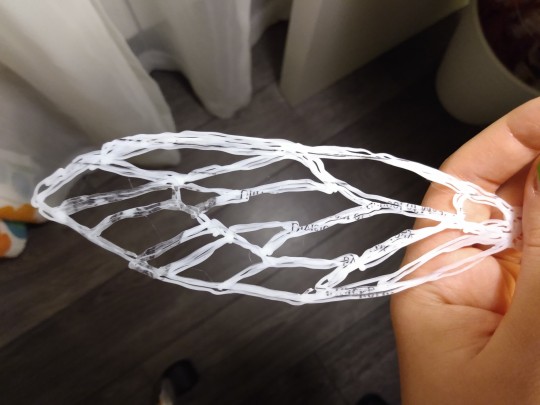
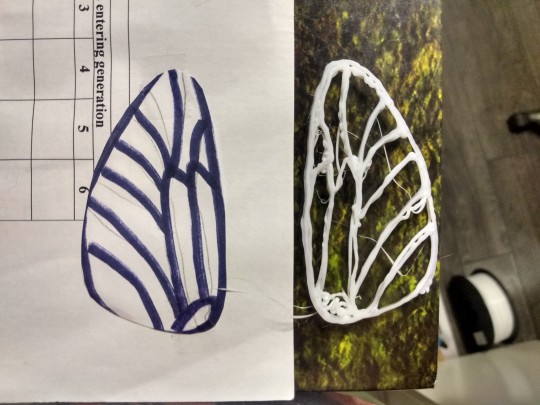
Fun fact: if you use a 3d pen on paper with printed text, the text may bleed into the plastic (left), but permanent marker ink will not bleed into the plastic (right)
#3d pen#irl 3d modeling#sculpture#PLA#3d printing#those are cicada wings im drawing up for my creatures btw
9 notes
·
View notes
Text
i got a new laptop yesterday and girl it’s so insane . it’s soooooo crazy i’m always going to be in awe at technology and how we can just do so many THINGS . like what do you mean laptops can FOLD
#????#i have not tried it yet but . i know it can#i think i can draw on this ?!?!?!?!?!#i just need a pen#which is so crazy#because just last weekend my friend and i were at the apple store (again) and i was crying over procreate on the ipad mini#csp offers a three month free trial eye emoji.......#okay i now realize the laptop folding statement sounds stupid because thats how you open and close them gsdgd BUT I MEAN LIKE#MULTIPLE WAYS???#also speaking of technology and being in awe of it#i still havent fully comprehended 3d printing#like what do you MEAN you can just . print stuff that isn't paper ???? what is it made of . wtf
8 notes
·
View notes
Text

this thing hasnt had a single thought in its entire goddamn life (appreciative)
#rain world#rain deer#3d printing#3d pen#i know its missing its dangly belly bits but i ran out of filament#my favorite fucked up creature-ass creature#awful bug beastie my beloved
21 notes
·
View notes
Text
everybodys merry until my dad raises his voice lol
#it ws bc my sibling swere throwing wrapping oaper without realizing there eas other stuff in th weapping paper#but umm lols.#its a little funny we were all like hsha lol n then we all just silently got out stuff and left#smiles. but its ok#got a unmmm. new journal and nice pens#and a moomin cup and watercolour ink!?!?#and one of those 3d printed slugs but its an axolotl#and i got incense and a coat and a suitcase which feels a LITTLE pointed but its all good /j
3 notes
·
View notes
Text
3D printing pen ideas for beginners

For beginners just starting out with a 3D printing pen(learn more visit here), it's essential to begin with simple projects to get comfortable with the device and its capabilities. Here are some easy and fun ideas:
Basic Shapes: Start by practicing drawing simple shapes like squares, circles, triangles, and rectangles. This will help you get used to controlling the flow of plastic and creating even lines.
2D to 3D: Begin by tracing over 2D shapes or drawings on paper, then lifting the pen off the page to add height and depth, turning your flat images into 3D sculptures.
Doodles and Sketches: Use the 3D printing pen to doodle and sketch in three dimensions. You can draw anything from simple patterns and designs to more complex objects like flowers, animals, or cartoon characters.
Personalized Keychains: Create personalized keychains by drawing initials, names, or simple shapes. You can add extra details like hearts, stars, or smiley faces to customize them further.
Miniature Sculptures: Sculpt miniature sculptures of objects like fruits, vehicles, or buildings. Start with simple shapes and gradually add details as you become more comfortable with the pen.
Jewelry and Accessories: Make jewelry and accessories like bracelets, earrings, or pendants. Experiment with different shapes, patterns, and colors to create unique pieces.
Decorative Objects: Use the 3D printing pen to create decorative objects like vases, candle holders, or picture frames. You can experiment with different textures and designs to add visual interest.
3D Stencils: Create 3D stencils by drawing outlines of shapes or letters on a flat surface, then filling them in with the 3D pen. This is a great way to practice precision and control.
Educational Models: Build simple educational models like geometric shapes, molecules, or the solar system. These projects can be both fun and educational for beginners.
Repair and Reinforcement: Use the 3D printing pen to repair or reinforce broken objects like toys, phone cases, or glasses frames. You can reinforce weak spots or add extra support to prevent further damage.
Experiment with Layering and Textures: Experiment with layering different colors and textures to create interesting effects. You can create gradients, patterns, or even simulate the look of wood or metal.
Remember to always start with slow speeds and low temperatures until you get comfortable handling the pen and manipulating the filament. As you gain confidence and skill, you can progress to more intricate and complex projects. With time and practice, you'll become more comfortable and confident in your abilities with the 3D printing pen(learn more visit here).
0 notes
Text
Your Quick Guide to 3D Printing!
Jump into the world of 3D printing with this easy-to-follow guide! Learn about the basics, types of printers, materials, software, maintenance tips, and more. Whether you're a newbie or looking to level up your skills, let's dive in and explore the exciting realm of 3D printing together!
Welcome to the world of 3D printing! This guide will walk you through the essentials, from how it all started to the latest trends and tips for beginners.
Let's start with the basics. 3D printing originated in the 1980s and has since become more accessible and affordable. It's an additive manufacturing process that creates objects layer by layer from digital designs. You can print with various materials like plastics, metals, ceramics, and even chocolate!
Now, let's talk benefits. 3D printing offers rapid prototyping, customization, cost-effectiveness, and the ability to create complex designs. It's perfect for hobbyists, small businesses, and professionals alike.
When it comes to printers, there are a few types to consider. FDM printers are beginner-friendly and affordable, while SLA printers offer higher resolution prints. SLS printers are great for printing metal parts but come with a higher price tag.
Choosing your first printer depends on factors like print volume, resolution, and budget. Consider what you'll be printing and how often.
Materials play a crucial role in 3D printing. PLA, ABS, and PETG are common choices for FDM printers, each with its unique properties. SLA and SLS printers use resin and powders, respectively, for more specialized applications.
Next up, software. Tinkercad and SketchUp are beginner-friendly options, while Blender and SOLIDWORKS offer more advanced features. Find what works best for your skill level and project needs.
Slicing software is essential for preparing your model for printing. Programs like Ultimaker Cura and PrusaSlicer translate your design into printable instructions, ensuring optimal print quality.
Maintenance is key to keeping your printer in top condition. Clean the build plate, nozzle, and moving parts regularly to prevent clogs and ensure smooth operation.
Post-processing techniques like support removal, sanding, and painting can enhance the appearance of your prints. Experiment to find what works best for you!
Lastly, join the 3D printing community for tips, tricks, and inspiration. Platforms like Reddit and Facebook Groups are great places to connect with fellow enthusiasts.
3D printing is an exciting journey full of possibilities. Whether you're a hobbyist or a professional, there's something for everyone in the world of 3D printing. So, dive in and start creating!
If you are interested in reading the full detailed article click here
Or
If you are interested in purchasing a 3D printer in India visit our website by clicking here
#3d printing#3d modeling#3dprintingtechnology#3dprintinginnovation#3dprinters#3dprintingart#3d printers#3d printer filament types#3d pen#3d pen stencils#3dprinting#3d print#fdm printers#sla printers#sls printers#diyprinting#diy fdm printers#3d filaments#3d resins#3d printer spare parts
0 notes